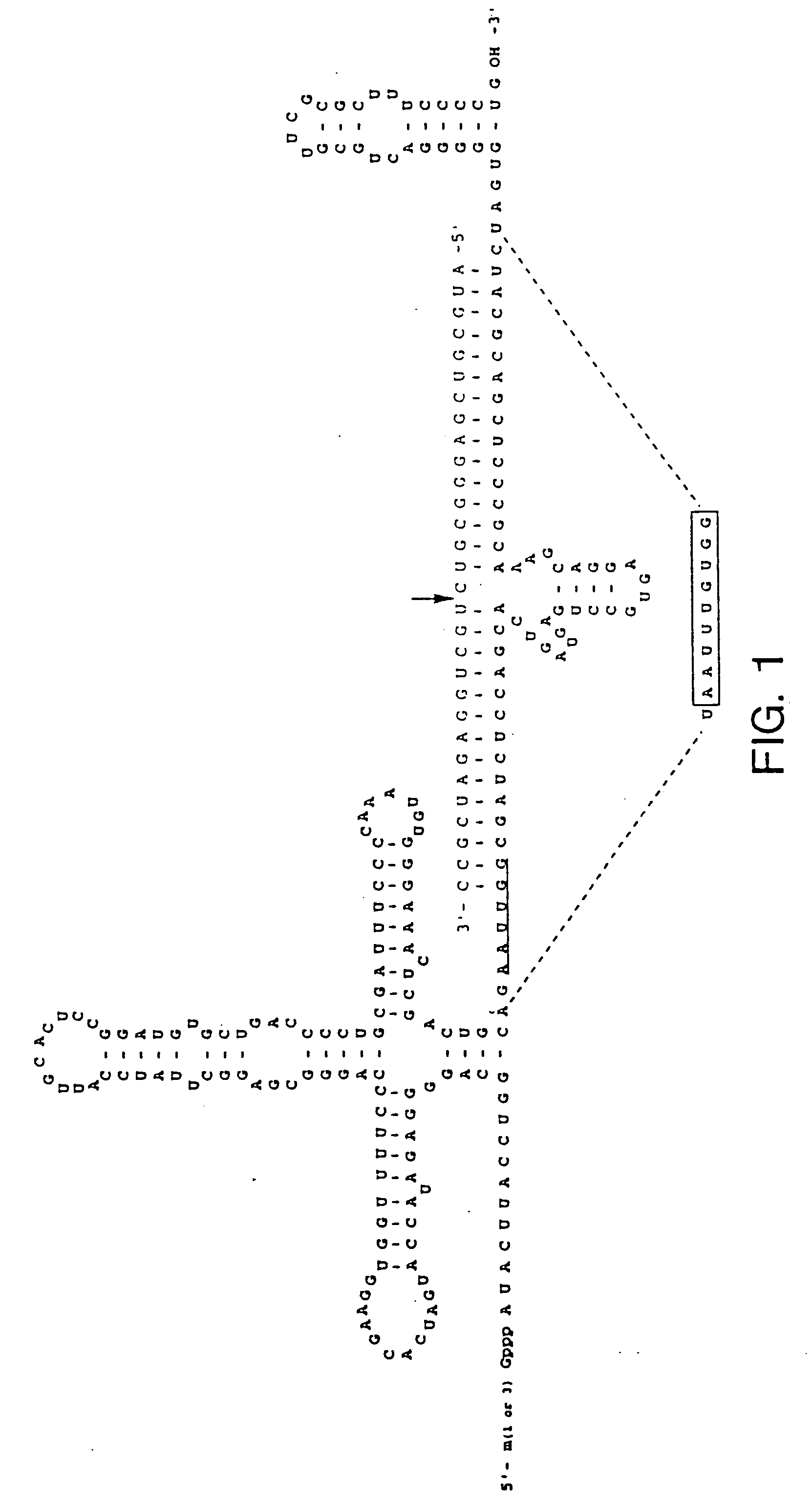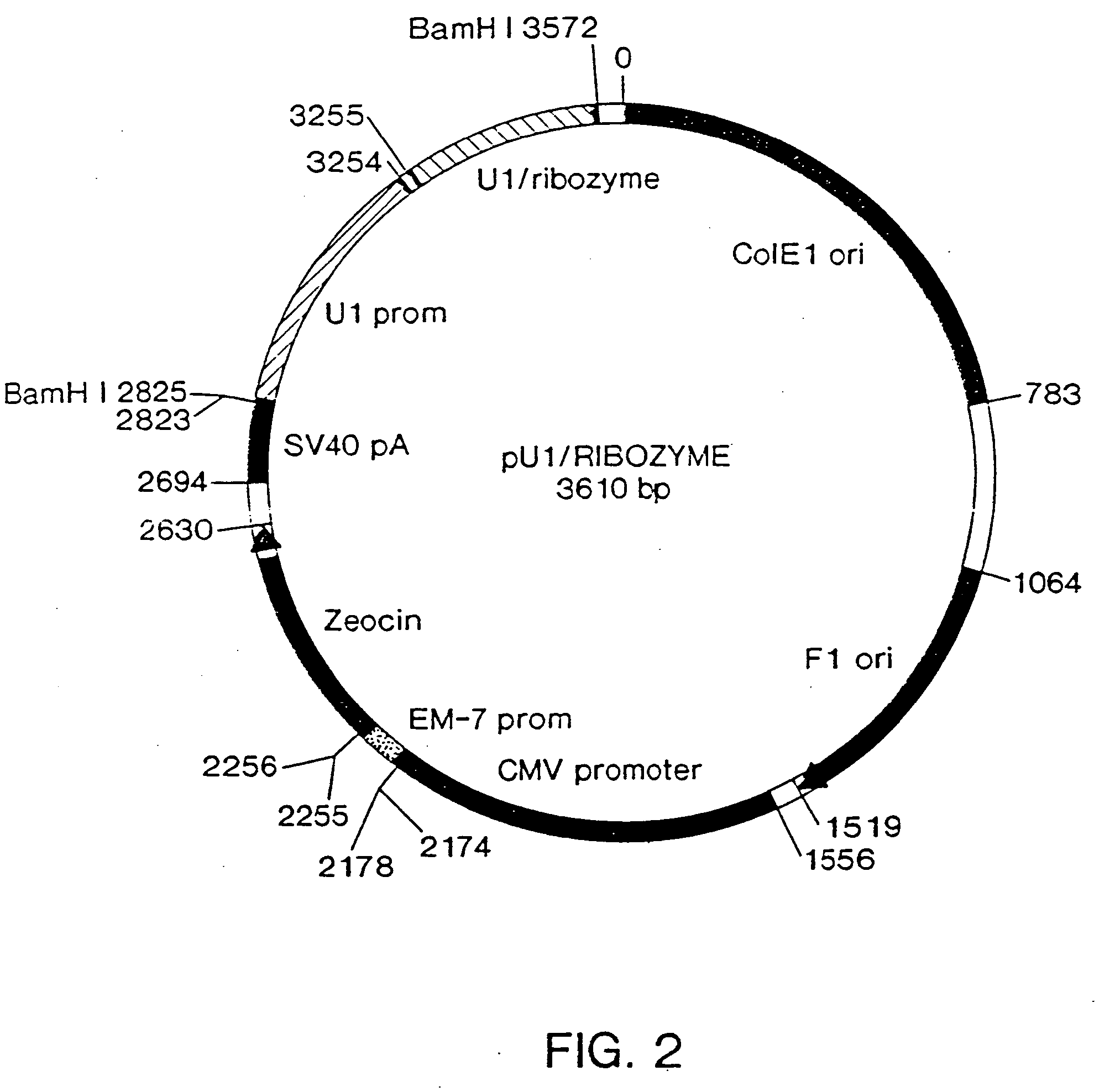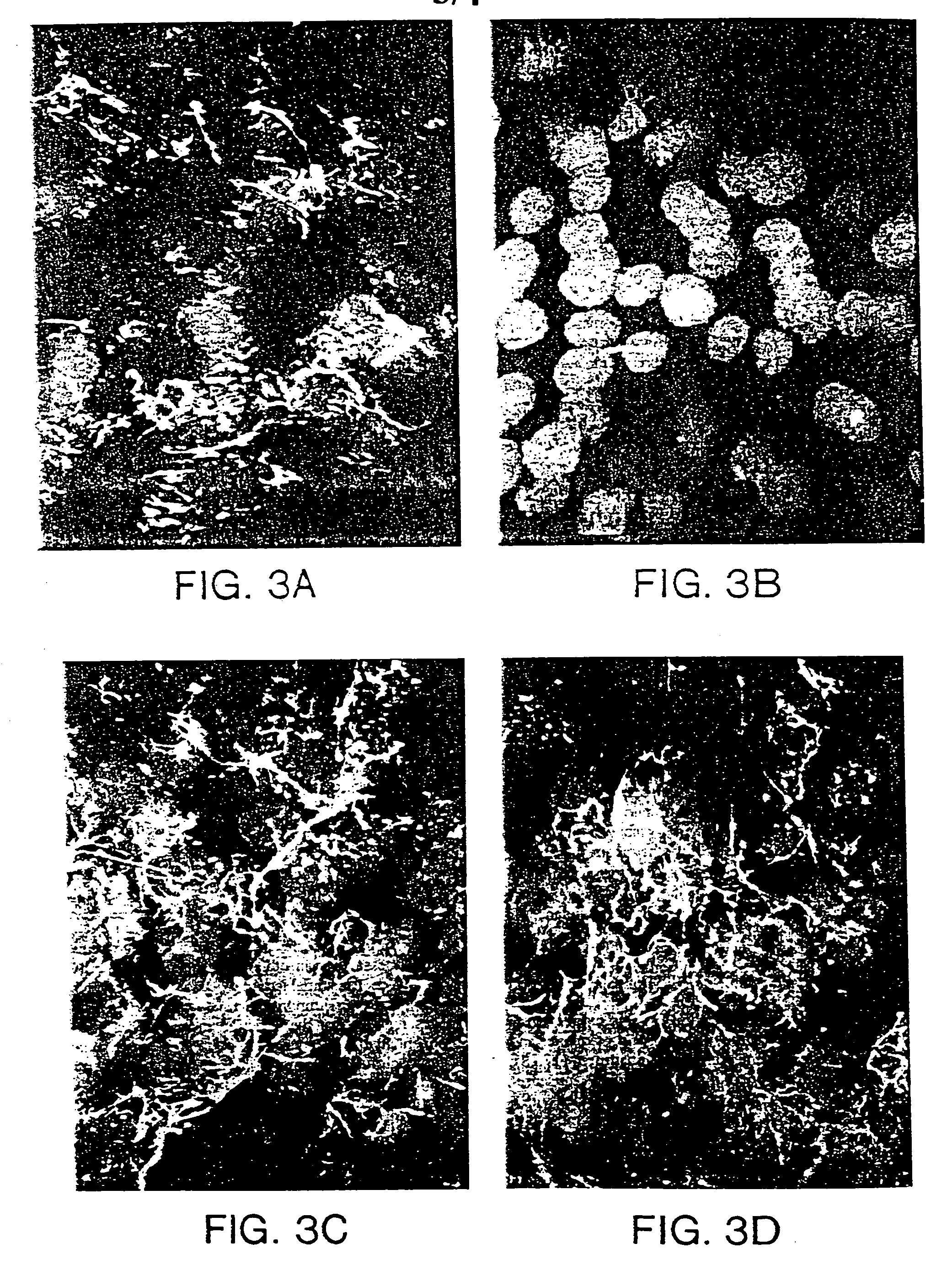Delivery construct for antisense nucleic acids and methods of use
a technology of nucleic acid and delivery construct, which is applied in the direction of organic chemistry, genetic material ingredients, peptide/protein ingredients, etc., can solve the problems of limited effective use of antisense oligonucleotides, narrow therapeutic index of chemotherapeutic agents, and disadvantages of systemic toxicity of conventional chemotherapy for neoplastic and virus-related diseases
- Summary
- Abstract
- Description
- Claims
- Application Information
AI Technical Summary
Benefits of technology
Problems solved by technology
Method used
Image
Examples
example 1
[0062] An antisense expression construct was constructed that incorporates several potentially enhancing features. The pU1 / FIB vector was constructed on the backbone of the pZeoSV (Invitrogen) prokaryotic / eukaryotic expression vector. The SV40 promoter, polyadenylation site and polylinker were excised from pZeoSV at the BamHI sites. A U1 snRNA expression cassette cloned into pUC13 was excised with BamHI digestion and ligated into the BamHI sites of the modified pZeoSV. Two rounds of site-directed mutagenesis (Deng, et al., Anal. Biochem., 200, 81; 1992) were then performed to change four nucleotides flanking the Sm protein restriction sites (pZeoU1EcoSpe). Complementary oligonucleotides that encode the antisense>core=sequence, shown in FIG. 1, including the 24 highly conserved nucleotides of hammerhead ribozymes (Cech, et al., Ann. Rev. Biochem., 55:599, were synthesized and annealed at 40E C such that the remaining 5′ and 3′ overhangs were exactly complementary to the overhangs lef...
PUM
| Property | Measurement | Unit |
|---|---|---|
| Structure | aaaaa | aaaaa |
| Antisense | aaaaa | aaaaa |
Abstract
Description
Claims
Application Information
 Login to View More
Login to View More - R&D Engineer
- R&D Manager
- IP Professional
- Industry Leading Data Capabilities
- Powerful AI technology
- Patent DNA Extraction
Browse by: Latest US Patents, China's latest patents, Technical Efficacy Thesaurus, Application Domain, Technology Topic, Popular Technical Reports.
© 2024 PatSnap. All rights reserved.Legal|Privacy policy|Modern Slavery Act Transparency Statement|Sitemap|About US| Contact US: help@patsnap.com










